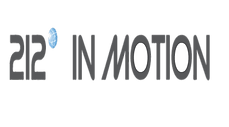
Why
The purposes of this analysis is to video record and evaluate the proper body mechanics of the run, and to correct running mechanics through the use of drills and strength, flexibility and balance training to optimize power distribution through the run cycle
How
-
Accurately define biomechanical inefficiencies and energy leaks
-
Fine-tune training o Exercise recommendations based analysis.
-
Corrective drills to help prevent injury and promote efficiency while running.
-
Useful with perceived exertion—subjective rating of how easy or hard the exercise feels
-
Improving your running technique will enable you to run faster with less effort,
A gradual warm-up, drills and stretches will be completed prior to motion capture.
Videos from the sagittal, frontal and posterior planes will be recorded to assess 3-dimensional movement.
Body lean and excess rotation from hips or shoulders are initially addressed to assess weaknesses throughout the kinetic chain.
Shoulder, hip and knee alignment are then examined for lateral or rotational movements that detract from forward motion.
Lastly, foot strike will analyzed with respect to center of mass and over- or under-pronation.
Based on motion analysis, appropriate corrective drills will be prescribed to address muscular weaknesses, balance, and inflexibilities.
Re-evaluation of running mechanics is suggested within the next 8 – 12 weeks to ensure proper correction of aberrant motions
A gradual warm-up, drills and stretches will be completed prior to motion capture.
Videos from the sagittal, frontal and posterior planes will be recorded to assess 3-dimensional movement.
Body lean and excess rotation from hips or shoulders are initially addressed to assess weaknesses throughout the kinetic chain.
Shoulder, hip and knee alignment are then examined for lateral or rotational movements that detract from forward motion.
Lastly, foot strike will analyzed with respect to center of mass and over- or under-pronation.
Based on motion analysis, appropriate corrective drills will be prescribed to address muscular weaknesses, balance, and inflexibilities.
Re-evaluation of running mechanics is suggested within the next 8 – 12 weeks to ensure proper correction of aberrant motions
Functional Movement
Evaluation
Run Analysis
Injury Prevent
Strength Exercises





